[1] 罗令,孙晓峰,皮丕喆,等.近10年来我国中老年人群骨质疏松症患病率的荟萃分析[J].中国骨质疏松杂志,2018,24(11):1415-1420.
[2] 唐佩福.老年髋部骨折的诊治现状与进展[J].中华创伤骨科杂志, 2020,22(3):197-199.
[3] KARRES J, KIEVIET N, EERENBERG JP, et al. Predicting early mortality after hip fracture surgery: the hip fracture estimator of mortality amsterdam. J Orthop Trauma. 2018;32(1):27-33.
[4] ASPRAY TJ. Fragility fracture: recent developments in risk assessment. Ther Adv Musculoskelet Dis. 2015;7(1):17-25.
[5] BRIGGS AM, PERILLI E, PARKINSON IH, et al. Measurement of subregional vertebral bone mineral density in vitro using lateral projection dual-energy X-ray absorptiometry: validation with peripheral quantitative computed tomography. 2012;30(2):222-231.
[6] CHALHOUB D, ORWOLL ES, CAWTHON PM, et al. Areal and volumetric bone mineral density and risk of multiple types of fracture in older men. Bone. 2016;92:100-106.
[7] PAWLOWSKA M, BILEZIKIAN JP. Beyond dxa: advances in clinical applications of new bone imaging technology. Endocr Pract. 2016; 22(8):990-998.
[8] MUSY SN, MAQUER G, PANYASANTISUK J, et al. Not only stiffness,but also yield strength of the trabecular structure determined by non-linear FE is best predicted by bone volume fraction and fabric tensor. J Mech Behav Biomed Mater. 2017;65:808-813.
[9] TAGHIZADEH E, CHANDRAN V, REYES M, et al. Statistical analysis of the inter-individual variations of the bone shape,volume fraction and fabric and their correlations in the proximal femur. Bone. 2017; 103:252-261.
[10] MAQUER G, MUSY SN, WANDEL J, et al. Bone volume fraction and fabric anisotropy are better determinants of trabecular bone stiffness than other morphological variables. J Bone Miner Res. 2015; 30(6):1000-1008.
[11] PANYASANTISUK J, PAHR DH, ZYSSET PK. Effect of boundary conditions on yield properties of human femoral trabecular bone. Biomech Model Mechanobiol. 2016;15(5):1043-1053.
[12] Wili P, Maquer G, Panyasantisuk J, et al. Estimation of the effective yield properties of human trabecular bone using nonlinear micro-finite element analyses. Biomech Model Mechanobiol. 2017; 16(6):1925-1936.
[13] Hammond MA, Wallace JM, Allen MR, et al. Mechanics of Linear Microcracking in Trabecular Bone. J Biomech. 2019;83:34-42.
[14] SALEM M, WESTOVER LM, ADEEB SM, et al. An equivalent constitutive model of cancellous bone with fracture prediction. J Biomech Eng. 2020;142(12):377-398.
[15] 陈瑱贤,王玲,李涤尘,等.全膝关节置换个体化患者右转步态的骨肌多体动力学仿真[J].医用生物力学,2015,30(5):17-23.
[16] 许杰,马若凡,蔡志清,等.成人髋臼发育不良伴骨关节炎行髋臼结构性植骨重建关节置换术的力学分析[J].中华关节外科杂志(电子版),2014,8(5):618-623.
[17] 郑利钦,林梓凌,陈心敏,等.载荷速率对股骨颈骨折裂纹扩展影响的有限元分析[J].中国组织工程研究,2019,23(20):3148-3152.
[18] 郑利钦,林梓凌,李鹏飞,等.动态载荷下松质骨对骨质疏松性股骨颈骨折断裂力学影响的有限元分析[J].中国组织工程研究,2019, 23(12):1887-1892.
[19] COMPLETO A, DUARTE R, FONSECA F, et al. Biomechanical evaluation of different reconstructive techniques of proximal tibia in revision total knee arthroplasty: an in-vitro and finite element analysis. Clin Biomech (Bristol, Avon). 2013;28(3):291-298.
[20] 陈国栋,罗羽婕,王锐英.有限元分析在股骨生物力学研究中的应用[J].实用医学杂志,2011,27(2):334-336.
[21] HARUN HBA, ELISE FMA, GLEN LNB, et al. Comparison of the elastic and yield properties of human femoral trabecular and cortical bone tissue. J Biomech. 2004,37(1):27-35.
[22] 齐士格,王志会,王丽敏,等.2013年中国老年居民跌倒伤害流行状况分析[J].中华流行病学杂志,2018,39(4):439-442.
[23] RICARDO B, MARTA P, LUIS PS, et al. Compression failure characterization of cancellous bone combining experimental testing, digital image correlation and finite element modeling - ScienceDirect. Int J Mechan Sci. 2020. doi.org/10.1016/j.ijmecsci.2019.105213.
[24] RÄTH C, BAUM T, MONETTI R, et al. Scaling relations between trabecular bone volume fraction and microstructure at different skeletal sites. Bone. 2013;57(2):377-383.
[25] MAQUER G, DALL’ARA E, YAN C, et al. The initial slope of the variogram, foundation of the trabecular bone score, does not predict vertebral strength in three distinct biomechanical tests. J Bone Miner Res. 2016;31(2):341-346.
[26] URAL A. Advanced modeling methods-applications to bone fracture mechanics. Curr Osteoporos Rep. 2020;18(5):568-576.
[27] SABET FA, RAEISI NAJAFI A, HAMED E, et al. Modelling of bone fracture and strength at different length scales: a review. Interface Focus. 2016; 6(1):20150055.
[28] ENGELKE K, VAN RIETBERGEN B, ZYSSET P, et al. FEA to Measure Bone Strength: A Review. Clin Rev Bone Mineral Metab. 2016;14(1):26-37.
[29] EL SALLAH ZM, SMAIL B, ABDERAHMANE S, et al. Numerical simulation of the femur fracture under static loading. Structural Eng Mechan. 2016;60(3):405-412.
[30] STAUBER M, MüLLER R. Age-related changes in trabecular bone microstructures: global and local morphometry. Osteoporos Int. 2006; 17(4):616-626.
[31] CUI WQ, WON YY, BAEK MH, et al. Age-and region-dependent changes in three-dimensional microstructural properties of proximal femoral trabeculae. Osteoporos Int. 2008;19(11):1579-1587. |
 文题释义:
文题释义:
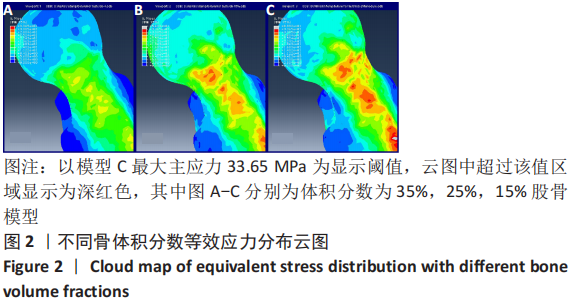
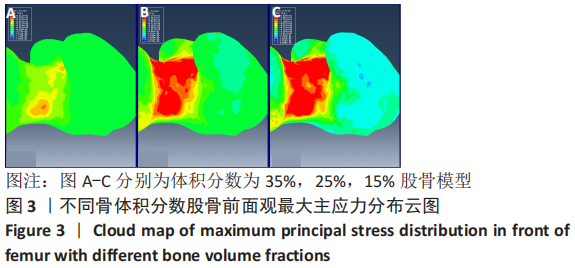
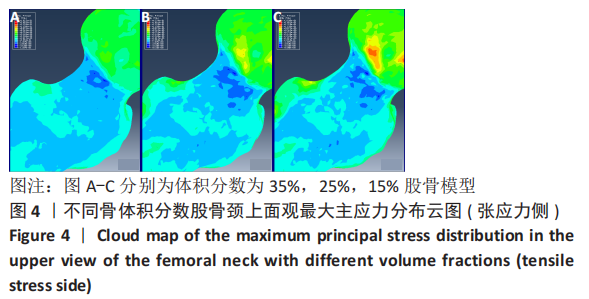
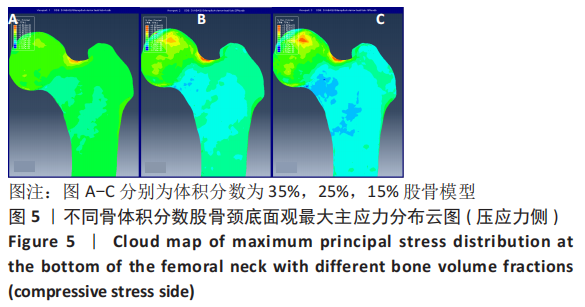
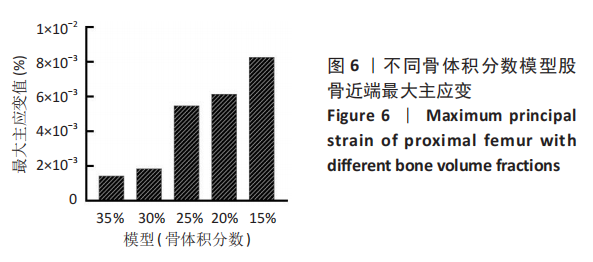
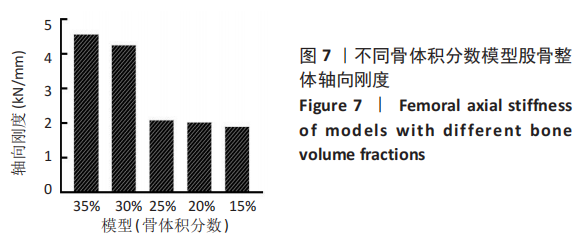

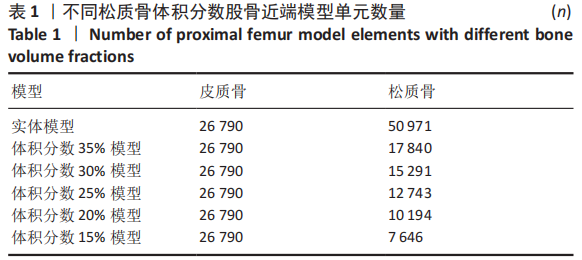

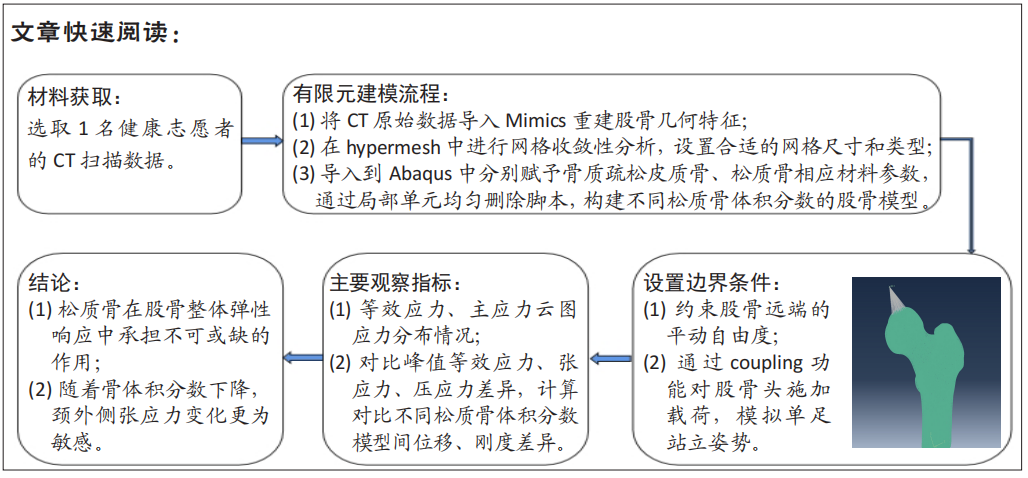 #br#
#br#